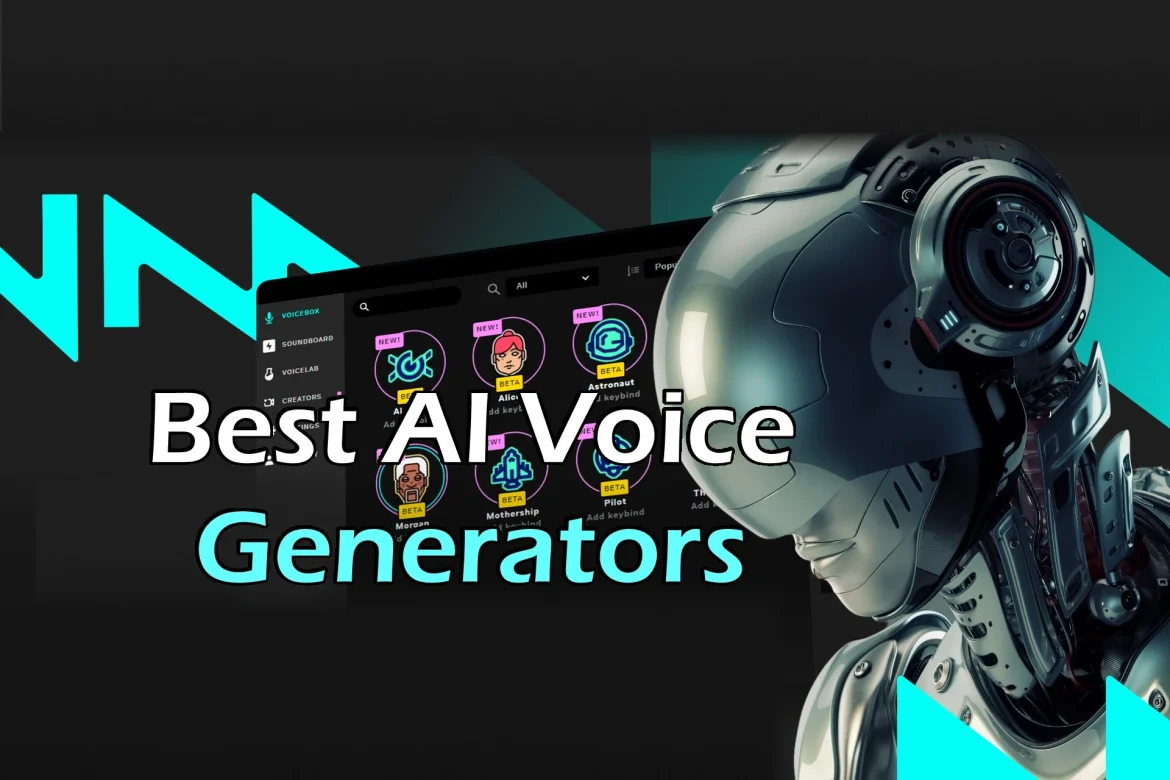
In recent years, the advancements in artificial intelligence (AI) have led to remarkable breakthroughs in voice synthesis technology. AI voice generators have become increasingly sophisticated, offering natural-sounding speech that can be used in various applications, from creating voiceovers for videos to developing interactive voice assistants. While many companies offer paid services, several provide free AI voice generators that are both powerful and accessible. In this article, we’ll explore the top free AI voice generator companies and how they are revolutionizing the way we create and use synthetic voices.
Table of Contents
1. Google Text-to-Speech
Overview:
Google Text-to-Speech is one of the most popular AI voice generation tools available. It powers Google’s vast array of products, including Google Assistant and Google Translate. This service converts written text into natural-sounding speech and is known for its accuracy and high-quality output.
Key Features:
- Multiple Voices: Google Text-to-Speech offers a variety of voices in different languages and accents, allowing users to choose the one that best suits their needs.
- Customizable Speech Parameters: Users can adjust the speed and pitch of the generated voice, providing more control over the output.
- Integration with Google Cloud: This tool is integrated with Google Cloud, making it easy to incorporate into applications and workflows.
Use Cases:
Google Text-to-Speech is widely used for voiceovers in videos, creating educational content, and powering voice assistants. It is also commonly used in accessibility applications, such as screen readers for visually impaired users.
Free Tier:
Google Text-to-Speech offers a free tier with a generous amount of characters per month, making it accessible for small projects and personal use. The free tier is particularly appealing for developers and content creators who want to experiment with AI-generated voices without incurring costs.
2. IBM Watson Text to Speech
Overview:
IBM Watson Text to Speech is part of IBM’s Watson AI suite, which is known for its advanced cognitive computing capabilities. This service allows users to convert written text into spoken words using a range of natural-sounding voices.
Key Features:
- Natural Language Understanding: IBM Watson Text to Speech uses advanced natural language processing (NLP) to generate speech that closely mimics human conversation.
- Multiple Languages and Accents: The platform supports a wide range of languages and accents, catering to a global audience.
- Emotion and Tone Modulation: Users can adjust the tone and emotion of the generated voice, adding personality and context to the speech output.
Use Cases:
IBM Watson Text to Speech is commonly used in customer service chatbots, virtual assistants, and interactive voice response (IVR) systems. Its ability to modulate emotion and tone makes it ideal for applications where the voice needs to convey specific sentiments.
Free Tier:
IBM Watson offers a free tier that includes a certain number of characters per month. This makes it suitable for developers and small businesses looking to integrate AI voice generation into their products or services without upfront costs.
3. Amazon Polly
Overview:
Amazon Polly is a text-to-speech service offered by Amazon Web Services (AWS). It converts text into lifelike speech, allowing developers to create applications that can talk. Polly is known for its wide range of voices and languages, as well as its scalability.
Key Features:
- Wide Range of Voices: Amazon Polly offers over 60 voices across 29 languages, providing a diverse set of options for different use cases.
- Neural Text-to-Speech (NTTS): Polly’s NTTS voices use deep learning to deliver highly natural and expressive speech. These voices are particularly good at mimicking human-like intonation and rhythm.
- Speech Synthesis Markup Language (SSML) Support: Polly supports SSML, allowing users to control aspects of speech such as pronunciation, volume, and speech rate.
Use Cases:
Amazon Polly is widely used in e-learning platforms, content creation, and smart devices. Its SSML support makes it a favorite for applications where precise control over the speech output is needed.
Free Tier:
Amazon Polly offers a free tier that includes a certain number of characters per month. This tier is ideal for developers and startups who want to explore AI voice generation without significant financial investment.
4. Microsoft Azure Text-to-Speech
Overview:
Microsoft Azure Text-to-Speech is part of the Azure Cognitive Services suite. It enables users to create natural-sounding speech from text input and offers a variety of customization options to tailor the output to specific needs.
Key Features:
- Custom Voice Models: Users can create custom voice models by providing recordings of their own voice, allowing for a personalized voice synthesis experience.
- Wide Language and Voice Support: Azure Text-to-Speech supports over 75 voices across multiple languages, ensuring wide applicability.
- Real-Time Voice Synthesis: The service offers real-time voice generation, making it suitable for applications that require immediate feedback, such as virtual assistants and live interactions.
Use Cases:
Microsoft Azure Text-to-Speech is frequently used in accessibility tools, content creation, and customer service applications. The ability to create custom voice models is particularly appealing for brands looking to maintain a consistent voice across different platforms.
Free Tier:
Microsoft Azure offers a free tier that includes a specific number of characters per month. This makes it a good option for developers and businesses that want to experiment with AI voice technology without committing to a paid plan.
5. Natural Reader
Overview:
Natural Reader is a text-to-speech software that offers both free and premium versions. It is particularly popular for its user-friendly interface and high-quality voice output. Unlike some other tools that are primarily designed for developers, Natural Reader is geared towards a broader audience, including students, professionals, and content creators.
Key Features:
- Easy-to-Use Interface: Natural Reader offers a simple and intuitive interface that makes it easy for users to convert text to speech with minimal effort.
- Variety of Voices: The platform offers a range of voices, including both male and female options across multiple languages.
- Online and Offline Use: Natural Reader provides both an online version and a downloadable desktop version, allowing users to generate speech even when they are not connected to the internet.
Use Cases:
Natural Reader is widely used for creating audiobooks, generating voiceovers for videos, and assisting with reading and comprehension tasks. It is also popular among individuals with visual impairments or reading disabilities.
Free Version:
Natural Reader offers a robust free version that includes several voices and languages. While the free version has some limitations compared to the premium offering, it is more than sufficient for most personal and educational use cases.
Conclusion
The rise of AI voice generators has transformed the way we interact with technology, offering new possibilities for content creation, accessibility, and user engagement. Among the many tools available, Google Text-to-Speech, IBM Watson Text to Speech, Amazon Polly, Microsoft Azure Text-to-Speech, and Natural Reader stand out as the top free options.
These companies offer powerful voice generation capabilities without the need for a significant financial investment, making them accessible to a wide range of users. Whether you’re a developer looking to integrate voice synthesis into your applications, a content creator seeking to add a professional touch to your videos, or simply someone who needs a text-to-speech solution, these free AI voice generators provide the tools you need to achieve your goals.
As AI technology continues to evolve, we can expect these platforms to become even more sophisticated, offering even greater control, realism, and versatility in voice synthesis. For now, these top free AI voice generators are leading the way, democratizing access to advanced voice technology and empowering users to bring their ideas to life in new and exciting ways.


